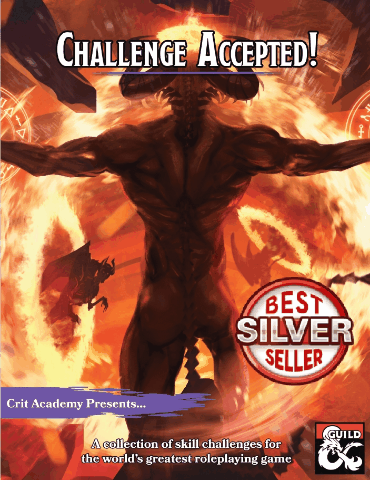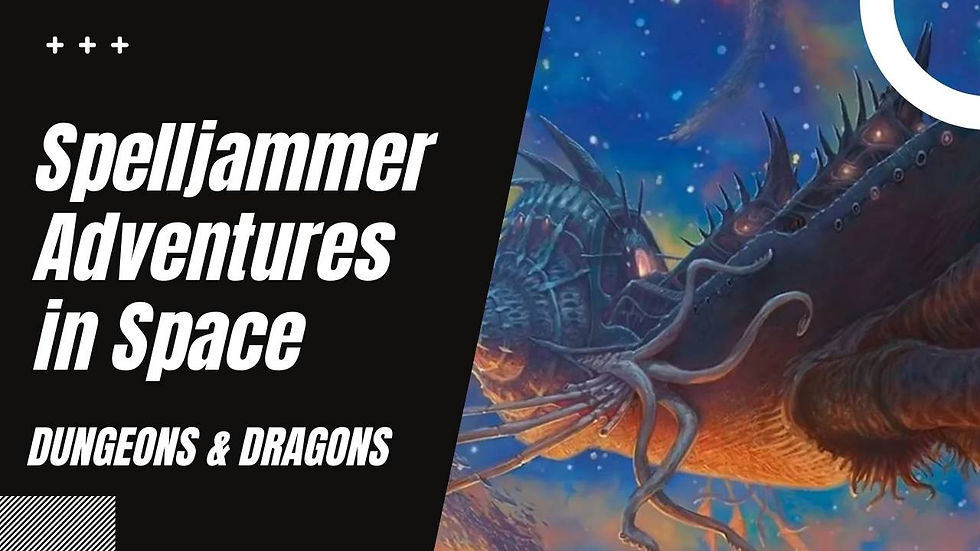5 Collaborative Storytelling Tips for D&D DMs
- Justin Handlin

- Jun 3, 2021
- 5 min read

5 Collaborative Storytelling Tips for D&D DMs
Guest Blog by: Tara M. Clapper
Tara is the founder of The Geek Initiative, a website about inclusive geek culture, and The Geek Initiative Larps. Read more about Tara at the end of this blog.
As a Dungeons and Dragons Dungeon Master (DM), you can memorize your Player Handbook and Monster Manual and run a technically proficient session or campaign--but if your story doesn’t engage players on a collaborative level, you’re going to lose them, especially in a multi-session campaign. Here are five tips to really engage your players in the story through the collaborative storytelling process.
As a professional storyteller hired to help rules-proficient D&D DMs tell more immersive stories, I’ve seen how collaborative storytelling supports not only the group but the DM when it comes to creating a D&D campaign everyone shows up excited to play.
When players have a hand in creating the story, it can seem scary for the DM at first, because the DM lacks some creative control. However, the result is more trust, more investment in the story, more delighted players, and a more rewarding experience for the DM as well.
Provide Meaningful Backstory and Lore
The best way to attract story-driven players is to provide irresistible lore and backstory. In D&D, this often means a standard-setting such as Forgotten Realms, but an original story within, leaning on an adventure naming specific NPCs involved in your story arc.
Not sure where to start with your compelling story pitch? Check out the types of D&D adventures for inspiration.
Many DMs limit the power or influence of a given character, and at the end of the day, that’s not actually very fun for the players if they’re looking to play a heavily political or social game. If you’re starting with low-level characters but the players still want them to have political influence, there are many ways to make it possible, such as:
Influential character is visiting a family member or contact abroad
Powerful or even famous character has lost their magical abilities and must quest to regain them
Provide challenging NPCs scaled appropriately for each encounter
Host a Session Zero
Most DMs know that a session zero typically focuses on character creation, but it can also serve other purposes, such as:
Introducing players to each other if they haven’t met
Calibrating the type of story the group wishes to tell together (tone, adventure, style, content)
The strengths and weaknesses of each player (one might be more about battle strategy while another player might break out into song immersively while playing a bard)
Discussing lore and providing information about what to learn about the setting
Creating characters as a group rather than individually
Allowing the players to come up with their own creative backstory about how the characters met
Backstory is key to collaborative storytelling, and this is where most of the work is done. As the DM, you need to think of yourself more as the director of an evolving play. Your job is to set the stage and facilitate; the players bring their own wants, needs, talents, and skills to the table. You can encourage extensive collaborative backstory creation by asking them to find one thing all their characters have in common.
The best part about this? Once your players get comfortable with investing a little more time in backstory, the backstory will drive the character's motivation, story, drama, and conflict. You’re empowering the players to do a large amount of work--and it’s fun.
Provide Agency, Railroad Less
Ever run an adventure straight out of a book, or force the characters into a certain direction? That’s really not fun for the players. With a bit of imagination, you can switch up a map, add a treasure or reward of personal significance for a character, and make character motivation more about personal fulfillment and journey so characters can complete individual goals while still working on something larger. You’ll find that this will inspire players to ask questions that indicate where they want the story to go.
By providing players and characters with agency, you’re inviting the players to do some of the lifting when it comes to storytelling. At the bare minimum, you should be able to provide them with an illusion of choice, for example, three doors that all lead to the same place, but are perhaps opened in different ways (such as physical challenge, magical challenge, and riddle).
Offer Visual and Kinetic Inspiration
Whether you’re playing D&D in person or online, you can offer visual and kinetic elements and inspiration for your players. You don’t need fancy virtual tables or even a Roll 20 account. What you do need to do is prepare a bit.
When the characters walk into your setting, what do they see? Consider creating a mood board on Pinterest to describe a place or culture you’ve invented--and invite them to contribute to it. This involves recognizing that the story the group is telling isn’t your own; while you are facilitating it, you’re one of many participants.
Calibrate for Bleed and Empowerment
What kind of story does your group want to tell? If your players are comfortable enough with you and each other, it’s likely that their real lives and experiences from the real world will enter gameplay, whether intentionally or not. For example, as a disabled woman, my goal is sometimes to advocate for myself in-game in a way that I feel I’m not permitted to do in real life. Other times, I want to completely escape the challenges I face in real life. The only way you, as a DM would know what I’m expecting regarding those sensitive topics, is if we’d had a conversation about it.
These needs can change over time, so check in with your players and encourage out of game discussion regarding comfortability levels. This is especially important if you’re DMing online and have international players: it’d be hard for me to expect a DM from the UK to realize what I’m going through in the US healthcare system, for example, because they probably don’t think of it that often.
The most heroic thing you can do as a DM is empower your players to tell the tales they want to see in the world--including ones that are missing, where they see themselves less represented. By employing these five tips, you can enjoy the rewarding experience of facilitating a story for the ages.

Tara M. Clapper is the founder of The Geek Initiative, a website about inclusive geek culture, and The Geek Initiative Larps. Known for innovating the live-action roleplay space, Tara creates original freeform live-action content played online. Tara has also contributed as an editor to the award-winning Magimundi Bestiary (5e and Pathfinder) and as a lore writer on High-Level Games’ Snowhaven. A professional GM, larp marketer, game designer, and consultant, she regularly consults with GMs and DMs looking to create more immersive, story-driven experiences for their players. Additionally, Tara has a professional background in publishing, writing, and marketing, and is a subject matter expert on inbound marketing and community management.















Comments